Cracked feet are a common sight in Queensland. Most of us have experienced walking behind someone in sandals or thongs and noticing their badly cracked and split heels. Perhaps you yourself are suffering from cracked feet. There are a number of causes of cracked heels and feet, but luckily there are also a number of things that can be done to help!
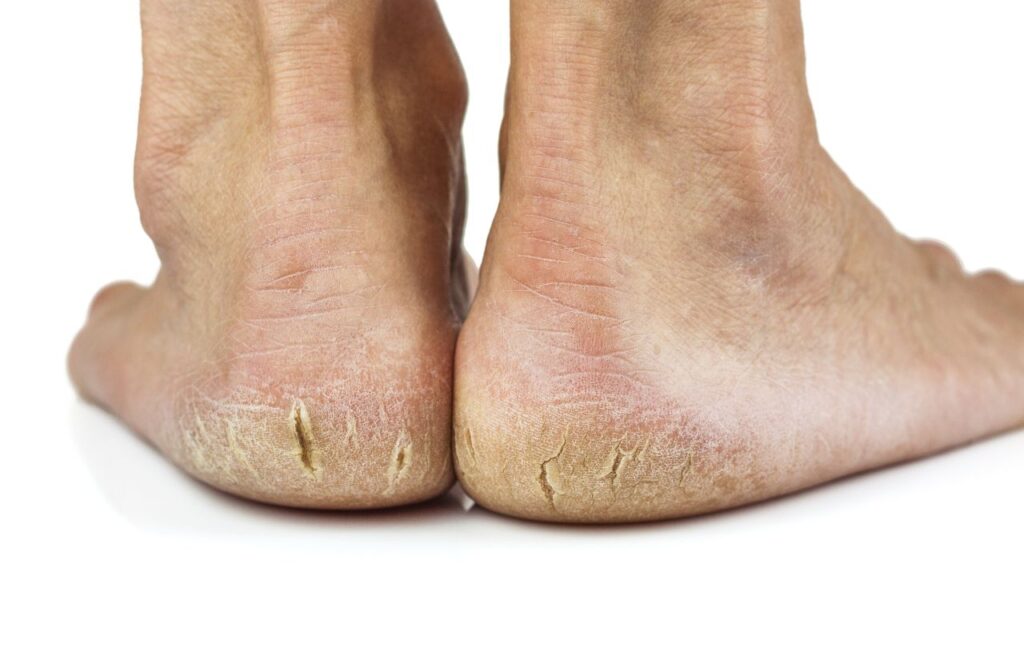
What are the causes of cracked feet?
A number of things can cause cracked feet and cracked heels in particular. Essentially, cracks in the skin happen because of severe dryness and hardening of the skin. When skin dries out, it loses its elasticity, and is therefore much more likely to crack and tear. Cracks also happen commonly when callus (thickened skin) builds up around the heels and balls of our feet. These areas are prone to cracking because they are the main moving joints in our feet when we walk; if there is a layer of rigid skin in the way of movement, the skin will crack!
Footwear and walking barefoot
One of the primary causes of callusing on the feet is simply what we wear (or don’t!) on our feet. Footwear plays an important role in reducing the build-up of callus which leads to cracked feet in a couple of ways. Firstly, footwear provides a degree of cushioning to the feet and skin. This cushioning dampens the force from the ground which travels up into the skin of the feet. With every step, this force has to be absorbed by the skin, fat, muscles and bones of your feet. If too much force travels into your feet, damage to the tissues and painful conditions can occur. To reduce the chance of this happening the body forms callus (thickened skin) in response.
This effect is compounded if we are walking on rough ground, in shoes with no socks, or in shoes where our feet slide around (commonly shoes with minimal straps/fastenings such as thongs). In this situation, the skin is facing additional stress from the debris on the ground and increased friction on the skin (commonly referred to as ‘sheer force’).
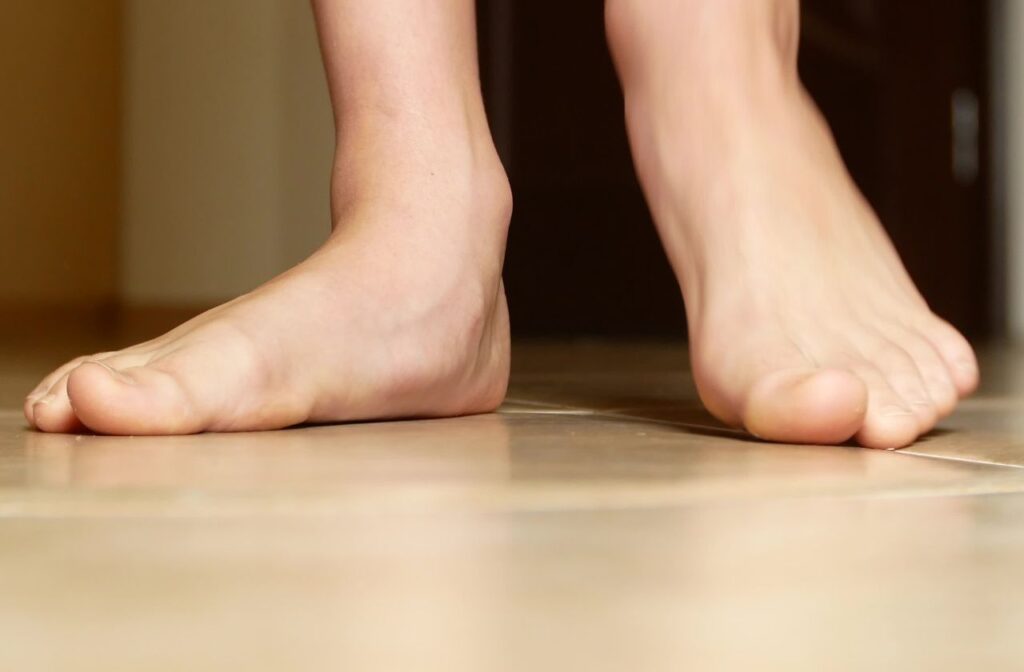
The way you walk / biomechanics
For some people, even wearing footwear does not seem to be enough to reduce the callus on their skin and they find they always wind up with cracked feet. Sometimes it is down to the unique biomechanics of your gait rather than just footwear choices.
For example, if you walk with a heavily pronated (rolling in) gait, there is often a large amount of pressure on the inside of your heel, arch and forefoot. Rather than being evenly distributed around your foot, the forces are concentrated in one area, which leads to callus formation and cracking when bad. This is one of the reasons why custom orthotics can help so many different people. Custom orthotics will redistribute these plantar pressures more evenly by correcting biomechanical abnormalities. This leads to less pressure ‘hot spots’ and therefore less callusing, cracking and corns.
Peripheral Neuropathy
Peripheral neuropathy refers to the loss of sensation in the feet. It is a condition which is commonly associated with Diabetes although it can be caused by other medical conditions. Peripheral neuropathy will interfere with your body’s ability to detect pressure going into your feet and modulate muscle use in response (imagine sitting cross legged for a long time and then trying to walk while your legs are asleep – you won’t walk very gently!). Due to this increased pressure, callus builds up over time and can crack and become painful.
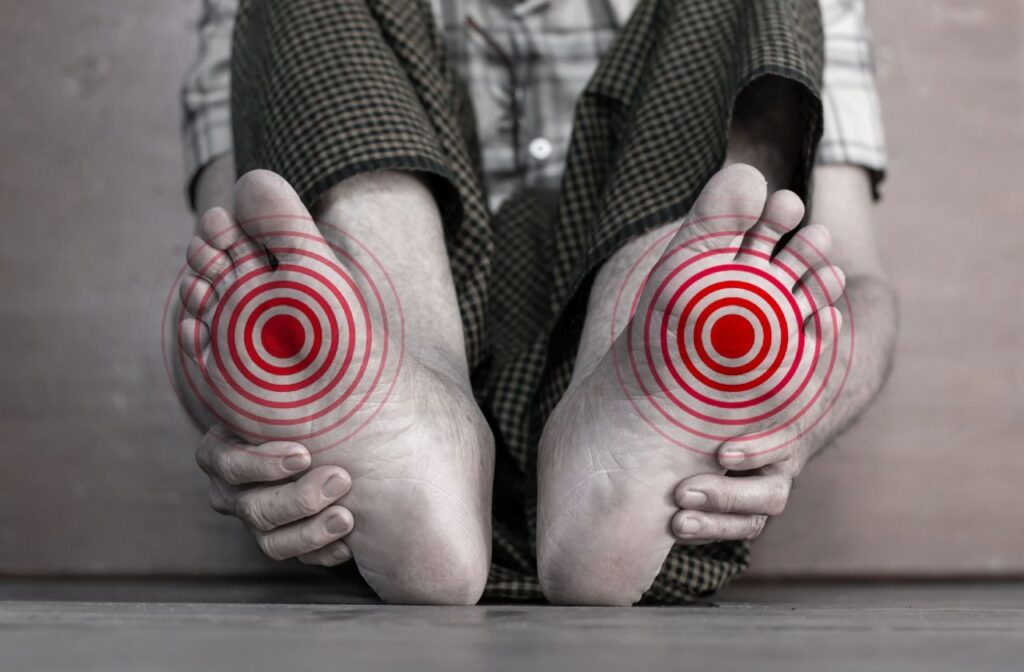
Hypothyroidism and other medical conditions
As we have learned, dry skin means skin which is more likely to crack. There are certain medical conditions which can dry out the skin, the most common of which is hypothyroidism (low thyroid hormone). Other conditions which may cause cracked feet include: Sjögren’s syndrome, eczema, palmoplantar psoriasis and kidney disease.
Smoking
We all know that smoking has a number of bad effects on your overall health, however one less talked about complication is the effect on your skin. Smoking damages the collagen and elastin fibres in your skin. These are the parts of your skin which give it elasticity, meaning that this damage causes dry, brittle skin. Smokers are far more likely to develop calluses, corns and cracks in their feet than non-smokers.

Skin infections
Another major cause of skin cracking is a fungal skin infection. On the feet this is called Tinea Pedis and is commonly known as ‘Athlete’s Foot’ These infections cause the feet to become dry, scaly, red and often itchy. Between the toes is a very common spot for tinea pedis and the skin will often crack in the folds between your toes. The rest of your feet can also be affected, and skin is likely to crack and break as the infection worsens.
Fungal infections can be treated quite easily with over the counter creams and sprays. Look for products which say “antifungal” and have an active ingredient listed such as ‘terbinfafine’ or ‘miconozole’.
Risk factors for cracked feet:
- Walking barefoot
- Walking in open-backed shoes
- Walking on rough or hot ground
- Obesity
- Smoking
- Pronated (rolling-in) or high-arched feet
- Taking very hot showers
- Cold, dry climates
- Hot humid climates or environments which encourage fungal infections (e.g. public pools)
- Diabetes
- Peripheral neuropathy
- Hypothyroidism
- Sjögren’s syndrome
- Eczema
- palmoplantar psoriasis
- Kidney disease
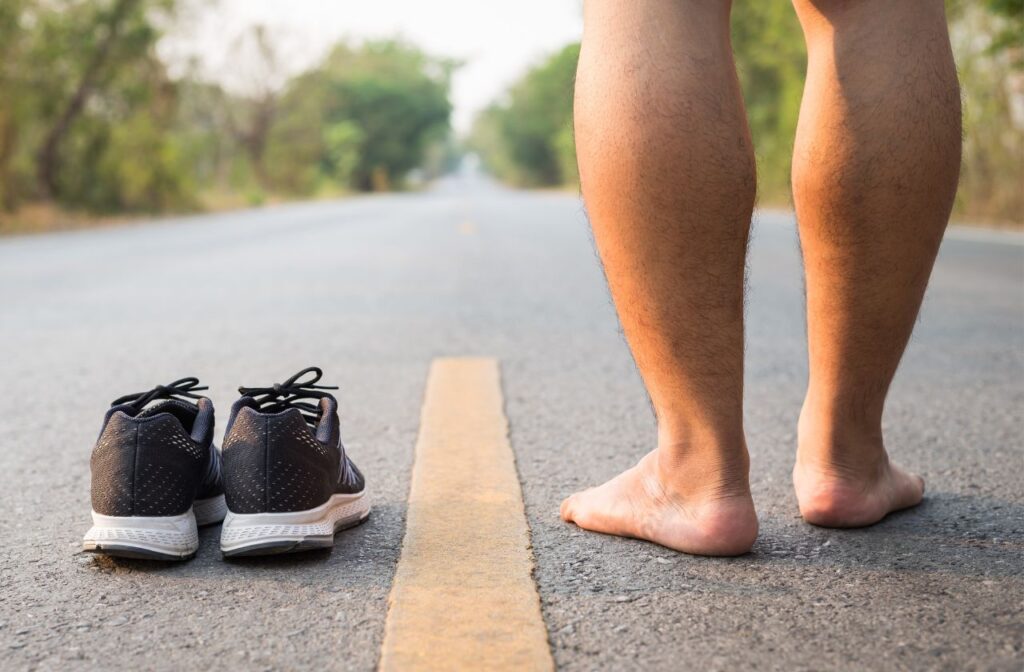
What is the best treatment for cracked feet?
Finding the best treatment for your cracked feet depends a lot on the cause of the cracking. Generally though, most cracks can be carefully debrided and reduced by a podiatrist once they have appeared. For cracked feet caused by medical conditions (e.g. tinea pedis, psoriasis), treating the primary medical condition will help the most, although physical debridement will still be helpful.
Seeing a podiatrist is the number one way to treat cracked feet. A podiatrist can assess the cause and provide adequate treatment and advice. This may include prescribing custom orthotics to correct gait abnormalities leading to callusing, or it may involve regular debridement and suggesting the best topical creams to apply to your feet. Often a combination of treatments are used together:
- Custom orthotics
- Urea-based creams, lotions and sprays
- Antifungal treatment
- Regular debridement (cutting off carefully with a sterile scalpel)
- Footwear advice
- Referral for further assessment of potential dermatological conditions (e.g. psoriasis)
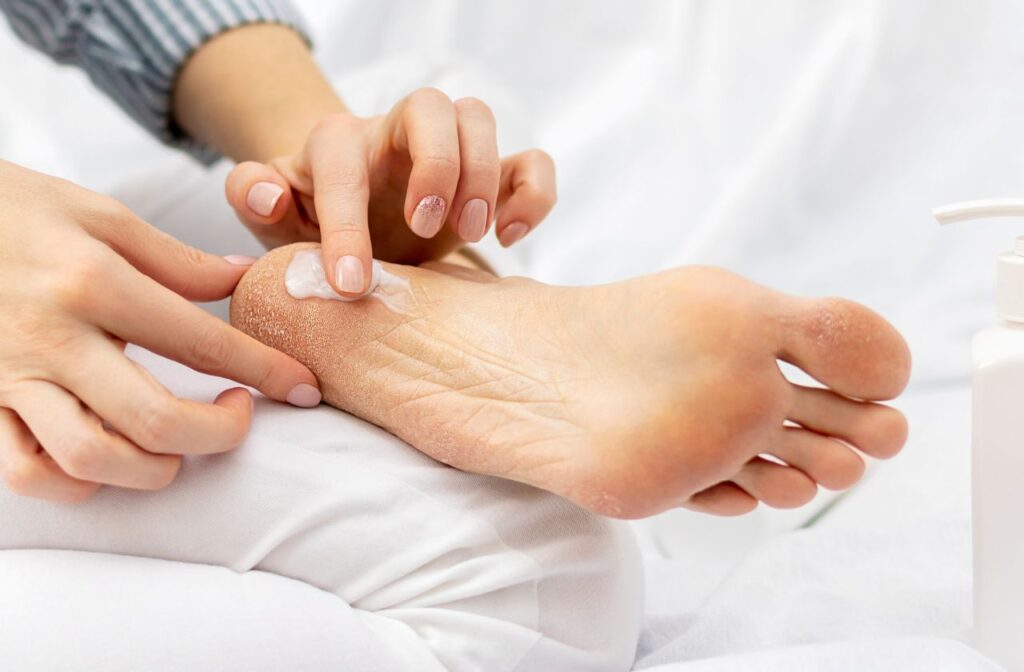
How to prevent calluses and cracked feet:
- Wear supportive, cushioned shoes
- Wear socks in enclosed shoes (go for breathable fibres e.g. 100% cotton, bamboo)
- Avoid much walking in open-backed shoes
- Apply a moisturising lotion to the feet daily (everywhere except in between the toes)
- Use moisturisers with ‘Urea’ as the active ingredient e.g. ‘Urea 5%’
- Do not walk barefoot
- See a podiatrist regularly
- Reduce or quit smoking
- Lose weight (if overweight)
- Have your gait assessed by a podiatrist – you may need custom orthotics
Who should I see for treatment of cracked feet?
Seeing a podiatrist is the best first step for dealing with callus, corns or cracks in the feet. Podiatrists will assess the cause, and provide appropriate individual recommendations and treatment. You simply do not have to live in pain!
Book an appointment online or call 1300 76 33 66.


